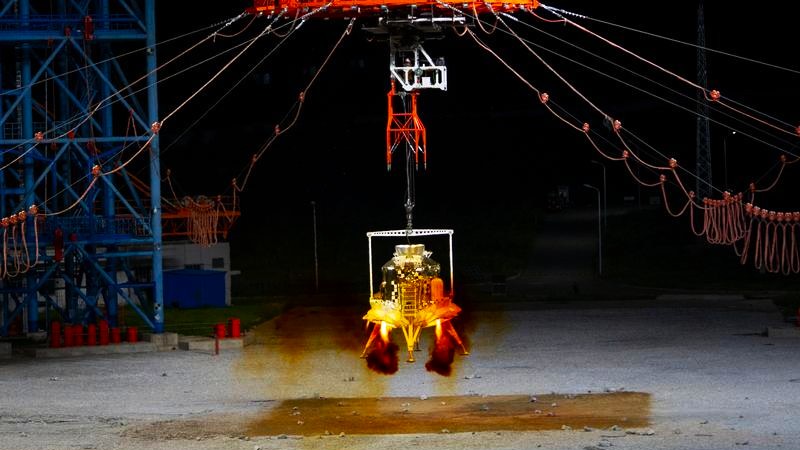China has successfully completed a comprehensive test for the landing and take-off of its manned lunar lander at the country’s test site located in the Huailai County of Hebei Province.
China apparently, plans to land its astronauts on the moon before the year 2030, with the purpose of conducting scientific lunar exploration.
The preceding test completed recently, therefore represents a key step in the development of China’s manned lunar exploration program, and it also marks the first time that China has carried out a test for extra-terrestrial landing and take-off of a manned spacecraft, said the China Manned Space Agency.
The recently tested lunar lander, named Lanyue, which means embracing the moon, consists of both a landing module and a propulsion module.
It is a newly developed spacecraft designed to support crewed missions to and from the moon.
It will be used to transport two taikonauts between the lunar orbit and the lunar surface — and will carry a lunar rover and other scientific payloads.
After landing, the lander will serve as a life-support center, an energy center and a data center, offering assistance and serving as a base for the taikonauts’ stay and activities on the moon’s surface.
Noting that the test was complex with a long cycle and technical challenges, the space agency said the success represents a breakthrough in research and development in terms of China’s manned lunar exploration program.

Having successfully carried out its three-step lunar exploration of orbiting, landing and sample return from the Earth’s celestial neighbour, China is now implementing its Phase-4 lunar exploration program.
This advances the Queqiao communications, navigation and remote sensing satellite constellation and planning the construction of the International Lunar Research Station (ILRS), according to Wu Weiren, chief designer of China’s lunar exploration program
The International Lunar Research Station is a China-initiated program that involves a multinational, comprehensive scientific research facility.
The facility is built on both the lunar surface and in lunar orbit, and it is designed for long-term autonomous operation with short-term human participation, Wu told reporters at the seminar.
The ILRS is expected to be expandable and maintainable, with ranging capabilities including Earth-moon transportation, power supply, central control, communication and navigation, lunar surface scientific exploration and ground support.
The ILRS will support sustained scientific exploration, resource utilization and advanced technology verification through multidisciplinary, multi-objective and integrated scientific and technological activities, according to the scientists involved in the project.

